Selecting an antenna
A guide to external cellular antennas (also known as GSM antenna)
An antenna is a passive 2-way device used to increase the signal strength received and transmitted by a mobile phone or wireless modem. Passive means that it requires no power to operate, it need only to be positioned and connected to the device to improve its performance. There are many different kinds of antennas and they are rated in dBi; the higher the rating the higher the signal strength the antenna will achieve. Mobile Phone Antennas and Wireless Modem Antennas are covered here.
Connecting Antenna
An antenna needs to be connected to the device to receive the increased signal and it can be connected to devices in different ways depending on the device used; the following shows the ways in which it is done.
A – For Devices with External Antenna Connectors:
1. Patch Lead
 |
 |
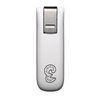 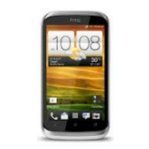 |
||
| Antenna | Patch Lead | Device |
External antenna connectors are usually found under a flap on the back of the phone or on the side or top of a modem. Patch leads are used to convert the universal connector found at the end of the antenna cable to the specific connector required by the phone or modem. This is the most common method of connecting an antenna. For phones and modems that do not have an external antenna connector, inductive patch leads or inductive cradles are used. You can read more about this further down the page.
Tip! Check these pages for more information on selecting the correct patch lead or cradle for Mobile Phone Antennas and Wireless Modem Antennas.
Selecting Mobile Phone Patch Leads
Selecting Telstra Modem Patch Leads Selecting Optus/others Modem Patch Lead
2. Direct Connect
 |
  |
|
| Antenna | Device |
This method also uses the external antenna connector on a device but does not require a patch lead. For popular phones and modems Comnet have antennas with direct connect cable ends; this is the most efficient way of connecting an antenna. This is possible as the connector found at the end of the antenna cable is equipped with the corresponding connector for that device.
B - For Devices without an External Antenna Ports:
1. Inductive Cradle
 |
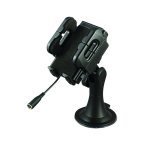 |
 |
||
| Antenna | Cradle | Device |
The connection here is achieved via proximity inductive coupling which sends an increased signal to the internal antenna of the mobile phone via a built-in coil in the back of the cradle. The antenna is connected to the cradle via its cable and FME connector. The mobile phone must be placed in the cradle to pick up the antenna signal as inductive coupling relies on proximity. The most convenient way to use the phone is either in "hands free mode" or via a BlueTooth® device such as earpiece, headset or portable phone. There are two types of inductive cradles: Universal and Phone Specific. The most efficient cradle to use is a Phone Specific model as these can be designed to transfer the maximum amount of antenna signal to the phones internal antenna. Universal Cradles may have some signal loss as the internal antenna placement in mobile phones varies from model to model affecting the proximity of the inductive coupling.
2. Inductive Pad
 |
 |
  |
||
| Antenna | Inductive Pad | Device |
Patch leads with inductive pads can be used for modems that do not have an external antenna connector. These work by proximity induction coupling which uses a pad containing a coil to send the increased signal into the internal antenna of the modem. The patch lead must be placed on the modem usually with a Velcro pad, which is supplied. They can also be used as an alternative to inductive cradles for phones, however, for best antenna performs, we recommend phone specific inductive cradles over inductive patch leads particularly for smart phones.
Antenna Types
Antennas come in 2 main groups, directional and non-directional and they come in differing strengths and constructs to suit different applications. Both are suitable for Mobile Phone Antenna and Wireless Modem Antenna applications.
Directional antennas are designed mainly for permanent fixed locations such as on roofs, communications towers or the side of buildings. They need to be pointed in the direction of a Cell Phone Tower to achieve the best result and are applied to areas of very poor signal strength. Some popular directional antenna models are shown below:
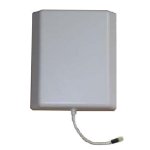 |
 |
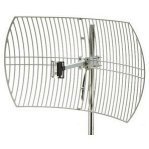 |
| Panel Antenna | Yagi Antenna | Grid Antenna |
Non-directional antennas, called Omni, are pointed vertically and gather signal from any direction. This means they can be used while on the move such as in cars, boats, caravans but can also be used in fixed locations of reasonable signal strength.
In the Omni type, there are magnetic base antennas and ground independent antennas; magnetic based antennas need to be placed on a magnetic surface and work by receiving the reflected signal off it. You will know if a surface is suitable, as the base will stick to it magnetically. Ground independent antennas do not require a particular surface to operate on. Popular types of Omni are the rod, magnetic based as well as some special application models:
 |
 |
 |
| Vehicle Antenna | Magnetic Base Antenna | Wall or Pole Mount Antenna |
4G LTE Antennas
For devices operating on 4G networks (1800mHz) a MIMO antenna will perform the best. The MIMO antennas listed are Omni and directional; the polarity for the directional is usually ±45° and for the omni vertical/horizontal or vertical/vertical. Narrow band antennas designed for the 4G networks will not work on 3G networks, however wide band antennas will work on both 3G and 4G, some popular models are below:
 |
 |
 |
| MIMO Desktop Antenna | MIMO Panel Antenna | MIMO Dual LPDA Antenna |
Choosing the right Antenna
Antenna selection largely comes down to the application and signal strength. Select an antenna type that is suitable for your application and then select a model with suitable or enough gain to achieve the signal improvement required. As a general rule of thumb, outside and high are good places to start when installing an antenna but also consider factors of convenience and installation. The reception indicator on the device however will tell you where you are getting the best reception. Use the following guide:
| Antenna Gain (dBi) | Increase in Bars* |
| 0 to 5 | 0-1 |
| 6 to 11 | 1-2 |
| 12 to 18 | 2-3 |
*Note: The local environment and topography may influence the results achieved.
Other useful information:
Check our range of GSM/3G/4G/5G Antennas
Check our range of Mimo Antennas
Feel free to call (02) 9899 5700 during office hours AEST or email us at sales@comnet.com.au if you’d like help choosing the best antenna.
